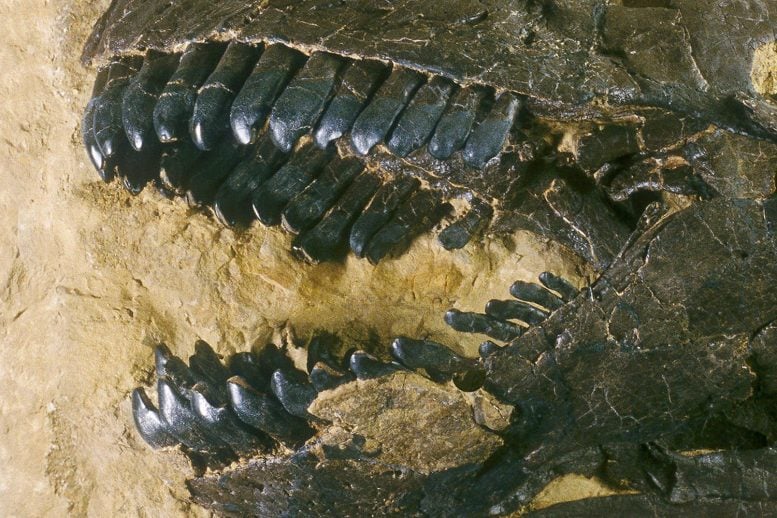
A new method allows scientists to reconstruct carbon dioxide levels and In the late Jurassic period, around 150 million years ago, the air contained around four times as much carbon dioxide as it did before industrialization – that is, before humans started emitting large quantities of greenhouse gases into the atmosphere. And in the late Cretaceous period, around 73 to 66 million years ago, the level was three times as high as today. Individual teeth from two dinosaurs – Tyrannosaurus rex and another known as Kaatedocus siberi which is related to Diplodocus – contained a strikingly unusual composition of oxygen isotopes. This points to CO₂ spikes that could be linked to major events such as volcanic eruptions – for example, the massive eruptions of the Deccan Traps in what is now India, which happened at the end of the Cretaceous period. The fact that plants on land and in water around the world were carrying out more photosynthesis at that time was probably associated with CO₂ levels and higher average annual temperatures. This study marks a milestone for paleoclimatology: until now, carbonates in the soil and “marine proxies” were the main tools used to reconstruct the climate of the past. Marine proxies are indicators, such as fossils or chemical signatures in sediments, that help scientists understand environmental conditions in the sea in the past. However, these methods are subject to uncertainty. By analyzing oxygen isotopes in tooth fossils, the researchers have now developed the first method that focuses on DOI: 10.1073/pnas.2504324122 The study was funded by the German Research Foundation (DFG) and by the VeWA consortium as part of the LOEWE programme of the Hessisches Ministerium für Wissenschaft und Forschung, Kunst und Kultur. Never miss a breakthrough: Join the SciTechDaily newsletter.
Evidence of High CO₂ and Climate Spikes

Thomas TütkenA Breakthrough for Paleoclimatology
Full article can be found at: https://scitechdaily.com/dinosaur-teeth-unlock-secrets-of-earths-ancient-climate/







